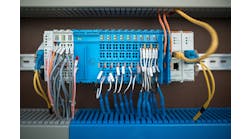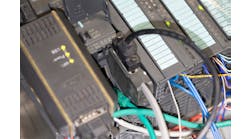By
Ian Verhappen, DFI ColumnistINDUSTRIAL ETHERNET is being touted as the common denominator for all future industrial networking however before that can happen a number of hurdles must be crossed, not the least of which is the need to understand the Ethernet represents only the base on which to build an industrial protocol. It is for this reason that so many flavors of Industrial Ethernet are being promoted by the various industry associations. The Fieldbus Foundation has HSE, Profibus has PROFInet, and then there are also ODVA, Ethernet IP plus many more. What is common about all the protocols is that they are all based on the same Physical Layer defined by the IEEE in the 802.n series of standards.Fortunately, the protocols also frequently share the same Data Link and Network Layers of UDP and TCP/IP. TCP/IP is the protocol we all take for granted as it is the one used when we connect to surf the Internet.The difference between UDP and TCP is the “handshaking” that occurs. UDP is a broadcast protocol while TCP is a broadcast and receive protocol. Because UDP does not wait for an answer to confirm a message has been received and then retransmit again if there was a transmission error like TCP but rather simply broadcasts the most current data next update cycle it is much faster and better suited to control where the data conditions also change rapidly. Since control is interested in the most recent/current conditions UDP is frequently used to send the process data across the network in industrial protocols.The rate of update in the continuous processing industry is normally not an issue, though it is good to know that the protocol designers did take high speed data transfer into account when designing them. Most continuous processes such as H1 paired HSE only consume 1% of the available bandwidth on the higher speed network (HSE) even when the lower speed system (H1) is fully loaded. An analogy is that H1 is like a dial-up modem while HSE is a cable or DSL modem – several orders of magnitude faster, even with its additional overhead. If you did the math without the overhead, each H1 system (31.25 kbps) on an HSE (100 MPS) would consume only 0.01% of the total available bandwidth.However, the discrete manufacturing industry with its very rapid update requirements of milliseconds do require both the network speed/bandwidth as well as the low overhead so UDP is required to meet this need.Because all these Ethernet based protocols share the same lower layers it is possible, though not recommended to share them among different protocols and place the Industrial Ethernet protocol, Corporate LAN traffic, and even VoIP phones on a single “wire.” If it were decided to try this, the network as a minimum must use IP V6 switches to not only minimize the impact of any data storms but also to monitor each packet for its priority so that the control related information always had the highest priority. However since the most significant cost of installing cable is not the cable itself but the associated labor there is no excuse for doing so.So what is different about each of the Industrial Ethernet protocols? The
Industrial Networking Model seen here shows how Ethernet sits at the “bottom” of the specifications and the Network Management layer consisting of the message specifications and access commands “manage” communications on the network by dictating who gets to talk when and for how long before it is the next device’s turn to have the network. Each protocol does this in a different way with some using token passing and others Collision Detection with “timeouts” to be sure all the members of the network get a chance to communicate their information.The largest difference between each protocol however is their “User Layer” since this is where the form of the messages is “interpreted” into something that can be understood by either other devices or their human operators. Examples of User Layer products are such things as the Fieldbus Foundation’s Function Blocks and the Device Description language used by HART, Profibus and FF. Because the User Layer is not defined by the OSI model it also has the most flexibility on what it can contain or define.Therefore as you can see, what makes all the various protocols different are the interposing 4 layers of the OSI model and most importantly the User Layer, which is not defined in the OSI model so even if you are purchasing an Industrial Ethernet product, it does not mean that it will interoperate with everyone else’s Industrial Ethernet product – the protocol still matters.Next column we will talk about the new skills required by industrial automation contractors will need to develop to prepare themselves for the new digital networked age and why if they do not progress will slow to crawl.As always, your comments and suggestions on the above as well as for potential future topics of discussion are encouraged. Please contact me at the information below.
Ian Verhappen is an ISA Fellow and Director at ICE-Pros, Inc. an independent Instrument and Control Engineering consulting firm specializing in fieldbus, oil sands automation, and process analyzer systems. Ian can be reached at[email protected]or through his web site www.ICE-Pros.com.




